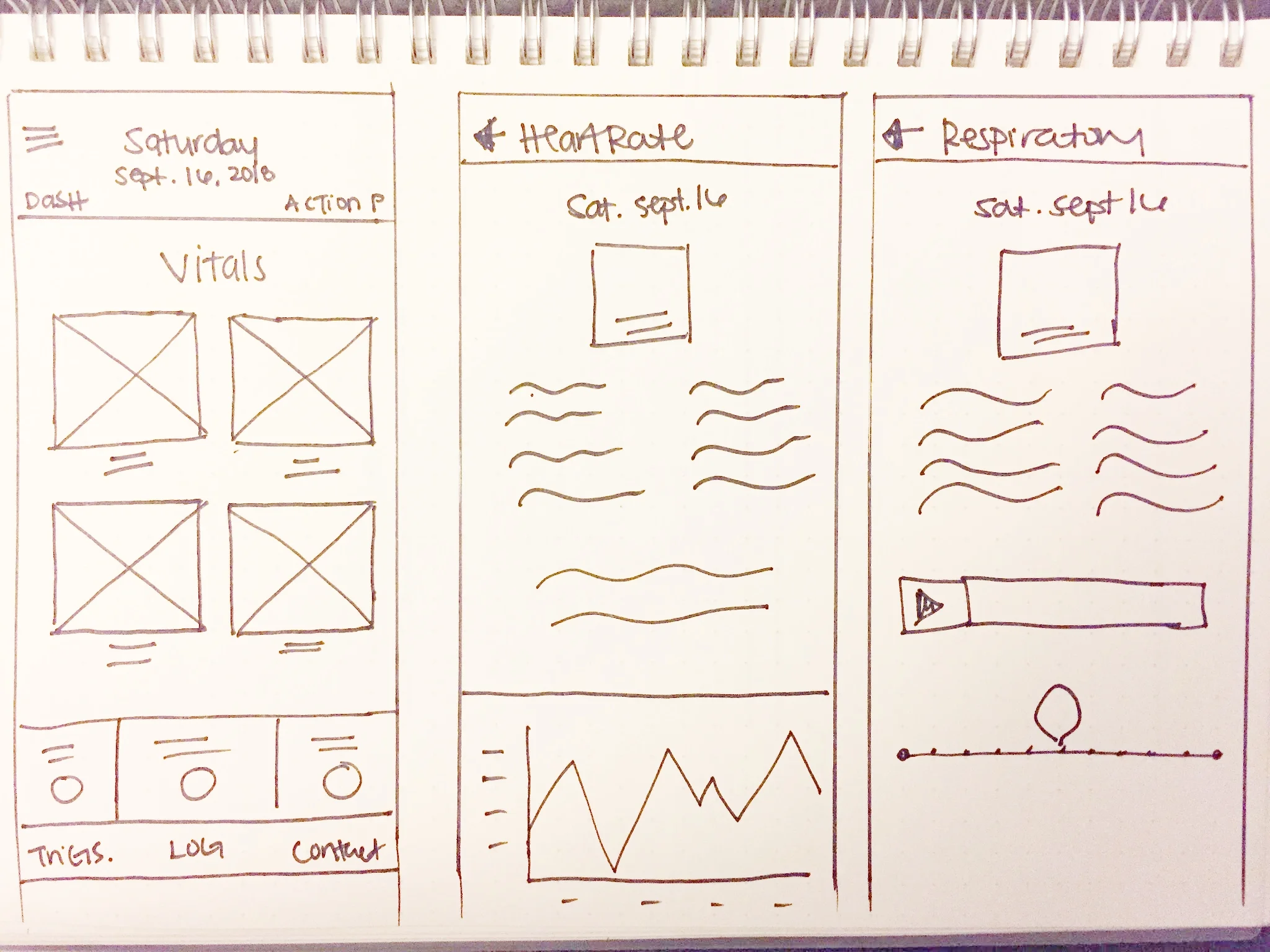Overview
Google Aria is a mobile app that helps people monitor and manage their asthma. According to the Centers for Disease Control and Prevention, asthma currently affects over 25 million adults and children in the US alone, and is responsible for 14.2 million physician visits each year as well as 1.8 million emergency care visits.
Google Aria’s technology is able to track:
- Heart rate
- Respiration
- Activity
- Sleep
The app can also aggregate information from other Google services such as weather, humidity, and pollution.
Details
Program
UX Academy, Designlab
Role
User experience designer, Product designer
Timeline
2 weeks sprint, September 2017
Tools
Sketch, Craft, Invision
Key activities
surveys, interviews, personas, research finding reports, user and task flows, responsive wireframes, brand style guides, UI Kit, low-fidelity prototype (sketch, invision)
“An estimated 39.5 million people, including 10.5 million children in the Unites States had been diagnosed with asthma in their lifetimes.”
Problem space
People living with asthma must often times adjust their day-to-day activities to properly manage their symptoms. Things that most people often overlook like weather, humidity, pollen, air quality - the presence of plants, animals, and dust. By taking advantage of today’s available technology, easily accessible apps and wearable devices lets asthmatic people:
- Identify and prepare for environmental triggers
- Track daily symptoms and access data trends to help identify new/existing triggers
- Directly connect with doctors and send health reports instantly
- Access asthma action plans in case of emergency
“Routine office visits and asthma self-management education are important in the management and control of asthma, while emergency department visits and urgent care visits may be indicators of poorly controlled asthma.”
Research
Over the span of 1.5 weeks, I conducted surveys, semi-constructed interviews, as well as primary and secondary research to learn more about the day-to-day lives of people afflicted with asthma, and to gain a deeper understanding of the challenges they are faced with that may be solved or eased with the use of a mobile app.
Surveys
Surveys via Google Forms were administered to people diagnosed with asthma. These surveys provided foundational insight on their individual history of asthma, frequency of occurrences, and impact on their day-to-day life.
Semi-constructed Interviews
I conducted 4 semi-constructed interviews with 4 individuals with asthma. Three of these individuals were diagnosed with asthma during childhood. One subject was diagnosed in his twenties, after presumably having gone through life with asthma unknowingly. I asked participants about the impact asthma has on their lives currently and growing up, including questions such as:
- What are your most common triggers to asthma? Name some warning signs that you look for that might trigger asthma.
- How informed are you about the symptoms, causes, and treatment of asthma? Are you as informed as you would like to be?
- What preventative measures do you take to manage your asthma?
- How did you learn about asthma? (From a doctor, parent, book, internet, etc)
“I wasn’t as informed as I should have been when I was diagnosed. My doctor didn’t explain what was happening. There was no internet back then to help me out.”
Through these interviews I was able gather the following insight:
- Participants were most concerned with environmental factors such as weather, pollen, and air quality
- Collecting trigger and vital data was not stressed as important to monitor upon initial diagnosis, however participants see the value in being able to track data
- Education and awareness of asthma is not as prevalent as the participants would prefer it to be
“I wish I was diagnosed sooner. I feel like people have asthma but don’t realize it. ”
Competitive Research
Based on my findings, i continued on with secondary research with an emphasis on existing mobile applications centered on helping people manage their asthma, as well as how active users are on these apps.
I analyzed four types of mobile applications: weather/pollen applications, air quality applications, asthma management applications, and health tracking apps. I was interested in finding out how to combine tracking and monitoring elements of asthma apps, and integrating individual vital and environmental data into a the most effective application.
Weather/Pollen
- AllergyAlert
- AllergyMinitor
- AASC
Asthma:
- AsthmaMD
- Asthma Ally
- Asthma
Air quality
- Air Matters
- Sensio Air
Health
- Fitbit
- Eve
- Carb Manager
Secondary Research
To further verify usage trends of asthma monitoring mobile applications. I joined active online communities on Facebook and Reddit and asked members what mobile apps they found useful and why. Both the Reddit and Facebook groups act as support group where users ask questions, explain their experiences, and provide tis for other members. Based on my research I found that:
- Facebook users did not suggest asthma-centric apps; they pointed me in the direction of using weather and pollen tracking apps, and what to look for. One user recommended the use of the built in Android health app.
- Only 1 Reddit user engaged and was able too start a conversation about an app they currently use focused on asthma management to help monitor peak flows.
Ideation
User flows
Persona
Prototyping
Wireframing
Style guide
Interactive designs
CONCLUSION
Aria underwent one round of testing using an Invision prototype. The purpose of this test was to analyze how users interacted with user interface, and how intuitive the the app flow was for each user.
The following objectives were tested:
- Ease of navigation and flow for site design
- Clarity of category sections
- Identify areas users encounter an unexpected outcome or get stuck
Testing subjects
Five subjects were selected for usability testing. Testers had varying degrees of asthma symptoms and triggers and ranged from 28-33.
Scenario + Tasks
- Explore dashboard and review vitals of app
- Access action plan
- Navigate to triggers and wellness log
- Contact doctor











